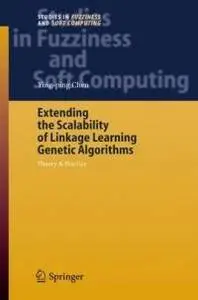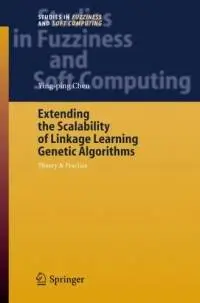Extending the Scalability of Linkage Learning Genetic Algorithms: Theory & Practice
Springer | 3540284591 | 2005 | PDF | 1MB | RS | FF
Genetic algorithms (GAs) are powerful search techniques based on principles of evolution and widely applied to solve problems in many disciplines. However, most GAs employed in practice nowadays are unable to learn genetic linkage and suffer from the linkage problem. The linkage learning genetic algorithm (LLGA) was proposed to tackle the linkage problem with several specially designed mechanisms. While the LLGA performs much better on badly scaled problems than simple GAs, it does not work well on uniformly scaled problems as other competent GAs. Therefore, we need to understand why it is so and need to know how to design a better LLGA or whether there are certain limits of such a linkage learning process. This book aims to gain better understanding of the LLGA in theory and to improve the LLGA's performance in practice. It starts with a survey of the existing genetic linkage learning techniques and describes the steps and approaches taken to tackle the research topics, including using promoters, developing the convergence time model, and adopting subchromosomes.
There are two primary objectives of this monograph. The first goal is to identify certain limits of genetic algorithms that use only fitness for learning genetic linkage. Both an explanatory theory and experimental results to support the theory are provided. The other goal is to propose a better designof the linkage learning genetic algorithm. After understanding the cause of the observed performance barrier, the design of the linkage learning genetic algorithm is modified accordingly to improve its performance on the problems of uniformly scaled building blocks.
This book starts with presenting the background of the linkage learning genetic algorithm. Then, it introduces the use of promoters on chromosomes to improve the performance of the linkage learning genetic algorithm on uniformly scaled problems. The convergence time model is constructed by identifying the sequential behavior, developing the tightness time model, and establishing the connection in between. The use of subchromosome representations is to avoid the limit implied by the convergence time model. The experimental results suggest that the use of subchromosome representations may be a promising way to design a better linkage learning genetic algorithm.
The study depicted in this monograph finds that using promoters on the chromosome can improve nucleation potential and promote correct buildingblock formation. It also observes that the linkage learning genetic algorithm has a consistent, sequential behavior instead of different behaviors on different problems as was previously believed. Moreover, the competition among building blocks of equal salience is the main cause of the exponential growth of convergence time. Finally, adopting subchromosome representations can reduce the competition among building blocks, and therefore, scalable genetic linkage learning for a unimetric approach is possible.



